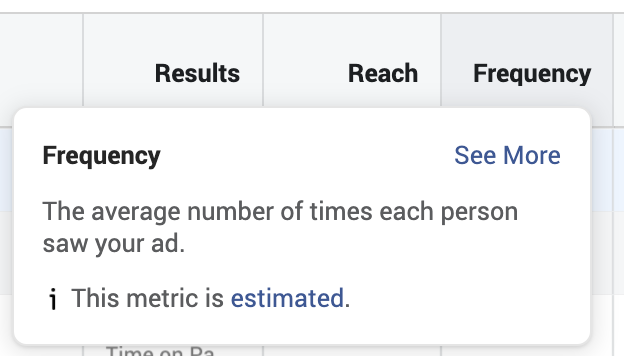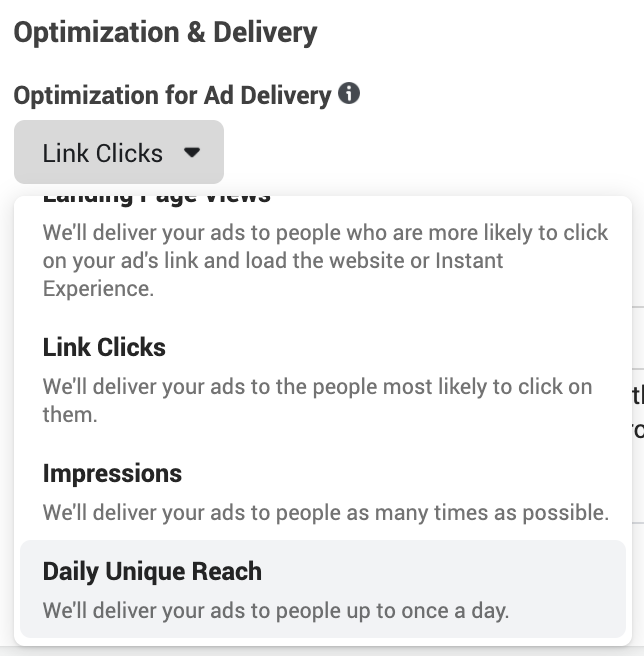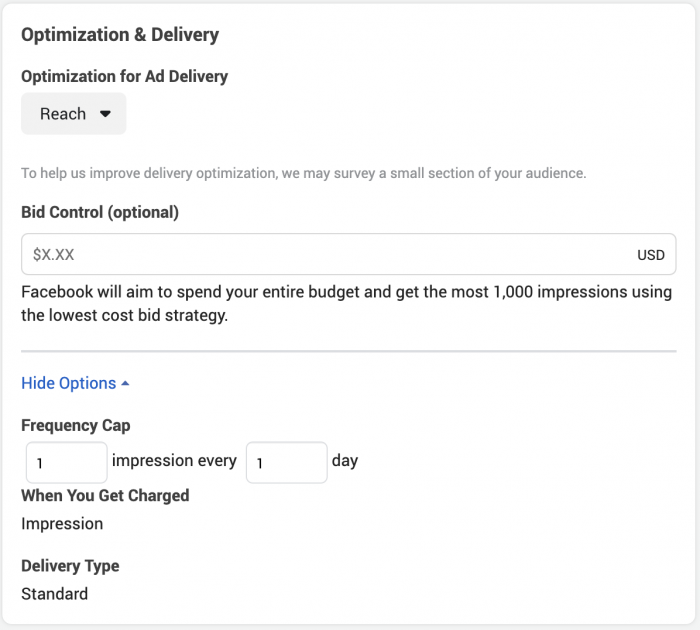As an advertiser on Facebook, you need to be aware of frequency. This is the number that tells you how often you’ve reached the average user with your ad during a given period of time.

There’s no hard or fast rule on what frequency is too high for a period of time, but the fact of the matter is that you don’t want to overwhelm your audience with ads.
You can reach users “too much.” They can become annoyed by your ads, and become more likely to report you as spam. These things will result in higher costs to reach users and inferior performance.
While it’s not a cure-all that should be used for all cases, there are two primary optimization options that you can use to manage ad frequency:
- Reach with Frequency Capping
- Daily Unique Reach
In this post, we’ll walk through how to use Daily Unique Reach.
What is Daily Unique Reach?
Daily Unique Reach is an optimization option that’s existed since 2014. It’s available for most objectives, even if it’s rarely used.

As the explanation in the image above says, selecting Daily Unique Reach for optimization allows you to “deliver your ads to people up to once per day.”
Note that, in my experience, this isn’t an exact rule. I’ve found that daily frequencies tend to be slightly over 1.00 for a day of ad delivery. There could be a couple of explanations for this.
First, if you use multiple placements, you may reach someone twice before Facebook is able to prevent it from happening again. Imagine an ad appearing on both newsfeed and right-hand column for a user at once.
While possible, I think a more likely explanation is that frequencies aren’t actually over 1.00 after all. Reporting is in your own time zone. You are reaching people across time zones. Facebook doesn’t clarify the definition of a “day.” You could reach someone at 11pm on Monday and 1am on Tuesday (their time) while, in your ad reports, it would appear within the same day.
Regardless, expect your daily average frequency to be close to 1.00.
How Daily Unique Reach Works
It’s important to understand your selection here. The example above comes from a campaign with the Traffic objective. By default, Facebook recommended optimizing for Landing Page Views. But I am instead selecting Daily Unique Reach.
When you optimize for an action, Facebook is going to focus on the people most likely to perform that action (within your designated audience). So while your potential audience may be 100,000, Facebook may focus on the 10,000 people most likely to click your link or convert.
When you use Daily Unique Reach, the action is no longer a consideration. Facebook will not optimize for an action. Their only goal is to show your ad to people within your designated audience (presumably as many people as possible while remaining within your budget), but no more than once per day.
That limitation includes all placements. So if you reach a user once in Audience Network, you won’t reach them again that day — even within the news feed.
Limitations and Considerations for Daily Unique Reach
Your ad will now be shown to people no more than once per day. That’s a pretty awesome option. But what do you lose in the process?
Facebook is no longer optimizing for your desired action, so the likelihood of the people who see your ad clicking (or converting, liking, etc.) goes down. The focus is now on controlled volume.
As a result, there are a few things you should consider when testing this out…
1) You may want to consider lower-performing placements. A big one for me is Audience Network. You may want to pick out only one or two — like the news feeds on desktop and mobile. Otherwise, you may be wasting your daily impression on a placement that isn’t effective.
2) Target a very focused audience. Since Facebook is no longer optimizing for you, the job is yours to eliminate waste. Target custom audiences. Better yet, target segmented custom audiences of high-performing potential customers. You could use this for abandoned cart scenarios.
Daily Unique Reach vs. Reach Optimization
Daily Unique Reach is the granddaddy of this type of micro-optimization. When I first created evergreen campaigns, I used Daily Unique Reach to reach as many people within the audience as possible.
Eventually, the Reach objective with Reach optimization came along. The big advantage to Reach optimization is the inclusion of frequency capping.

With Reach, you get a bit more control of how often people see your ads.
So, which should you use? My preference is Reach optimization due to frequency capping. However, you may want to use an objective other than Reach. If you do, Daily Unique Reach is typically an option.
Your Turn
What do you think of Daily Unique Reach? Have you used it? What results are you seeing?
Let me know in the comments below!






